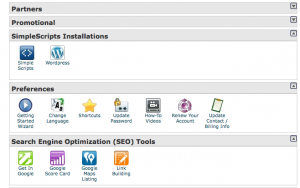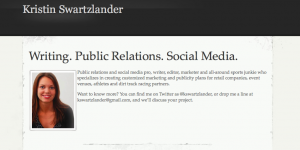Over the next few days we’ll be posting some racing job descriptions that are open right now (you can apply for them today!) and/or are great future careers in racing that you can set your sights on. A motorsports education isn’t necessarily required for these racing jobs, but it would give you a great leg up on the competition.
NASCAR has quite a few full-time and part-time racing job openings, including racing internships. Some of the entries include:

As a Multimedia Marketing Assistant in this fast paced atmosphere, responsibilities include:
• Provide professional administrative support to the department.
• Assist the Multimedia Team with souvenir program business.
• Schedule appointments, conferences, and travel.
• Work with the Accounting Department on Accounts Receivable for the Multimedia Department.
• Maintain media and billing contracts.
• Create documents, letters and correspondence in Microsoft Word, Excel, and PowerPoint.
Associate’s Degree or higher preferred with a minimum of 2 years administrative professional experience. Experience in the ad agency, media, sports or entertainment industries highly preferred. The ideal candidate must be able to multitask, be well organized with attention to detail, and demonstrate excellent written and oral communication skills.
Software Engineer – NASCAR (Daytona Beach, FL)
NASCAR is searching for a talented professional to join our team in the position of Software Engineer. Based at our premier new headquarters in Daytona Beach, the Software Engineer will be responsible for creating a conceptual and detailed design, writing code based on conceptual descriptions of the business logic.
Duties include but are not limited to:
• Developing software based on the description of the business logic.
• Making enhancements to existing programs.
• Database programming
Required skills/experience:
• Bachelor’s degree (B.A.) and three years experience in the software packages is required:
o MS.NET (VB.NET)
o Experience in Silverlight / WCF
o SQL Server 2008
o Active Reports – Data Dynamics
NASCAR offers an exciting fast-paced environment with competitive pay and outstanding benefits including 401(k) eligibility after working 30 days.

NASCAR Media Group is searching for a talented professional to join our team in the position of Broadcast Engineer in Charlotte, NC. The position will be responsible performing engineering maintenance and repairs as well as video feed operations in the television broadcast plant.
Responsibilities include, but are not limited to the following:
• Perform preventive maintenance on existing broadcast equipment.
• Perform troubleshooting and repair on defective equipment and assist with video programming feeds.
• Assist other engineers performing similar functions in a team environment.
• Assist with parts inventories, cable pulling and equipment installation.
• 1% travel.
Qualifications include the following:
• Associate’s degree or equivalent from two-year college or technical school; or a minimum of 2 years related Broadcast Maintenance Engineering experience and/or training; or equivalent combination of education and experience.
• Must be proficient in Microsoft Excel, Word, and Outlook.
• The ideal candidate must have the ability to multi-task, be well-organized with attention to detail, and demonstrate excellent written and oral communication skills.




